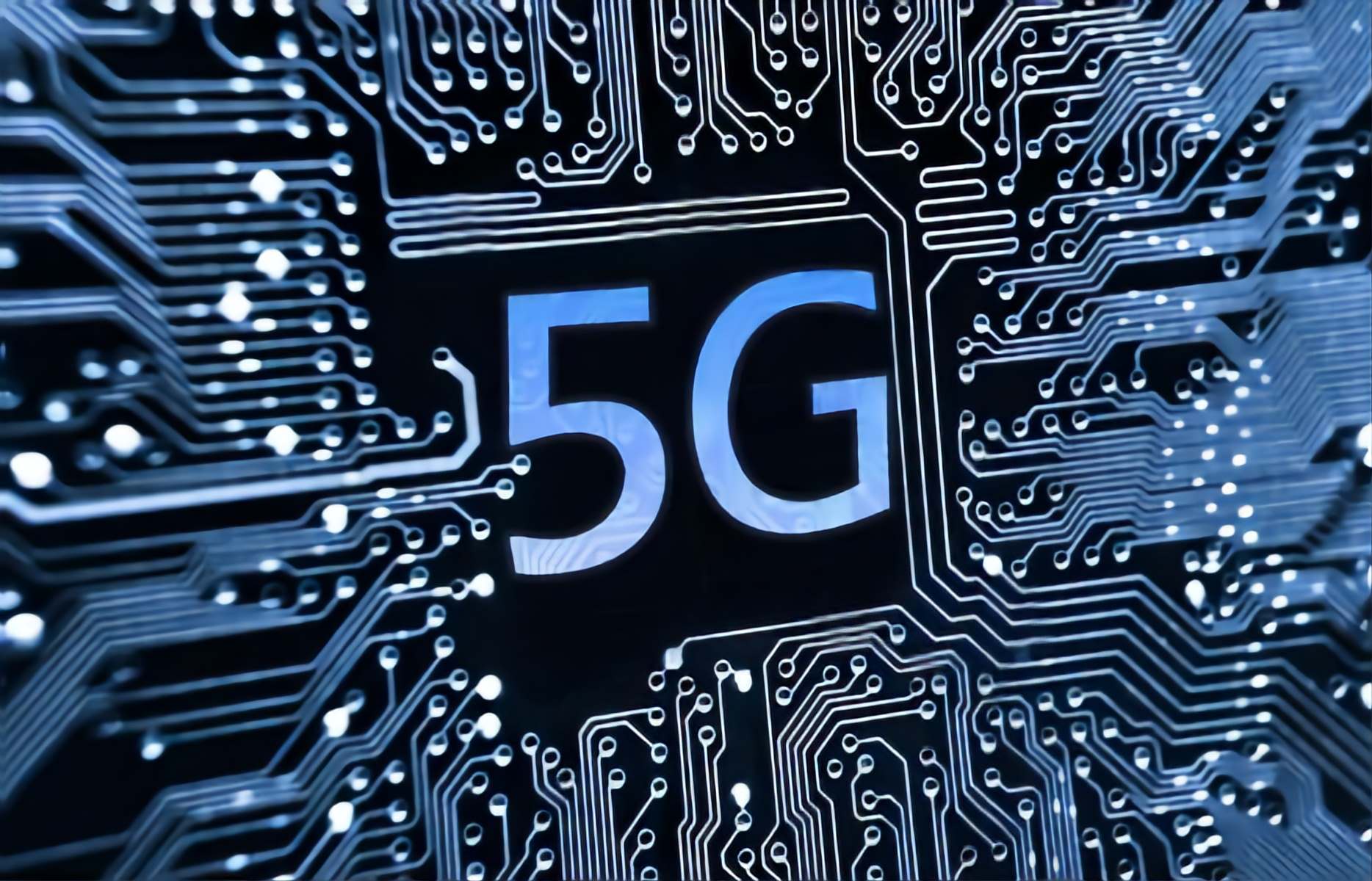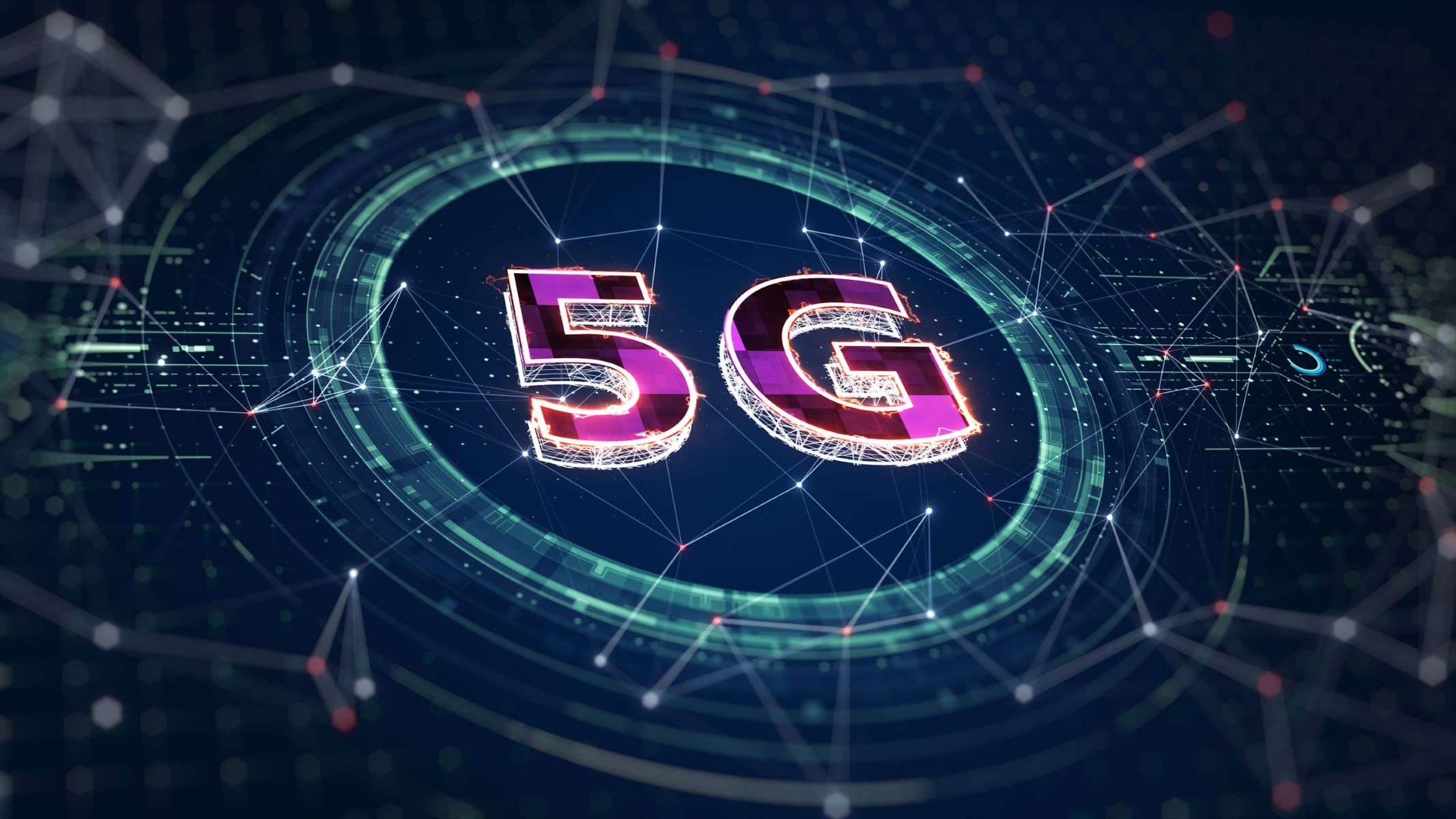Introduction
In today’s fast-paced and highly connected world, the demand for faster and more reliable network connectivity is at an all-time high. This is where the revolutionary 5G technology comes into play. Not only does 5G promise lightning-fast speeds and reduced latency, but it also introduces a concept called “network slicing” that will revolutionize the way we experience and interact with the internet.
But what exactly is network slicing, and how does it work in the context of 5G? In this article, we will delve into the ins and outs of network slicing and explore its benefits, use cases, challenges, and future implications.
Network slicing can be best described as the division of a physical network into multiple virtual networks, each tailored to serve the specific needs of different applications, industries, or users. It allows network operators to allocate dedicated network resources to different slices, ensuring that each slice receives the required bandwidth, latency, and reliability to deliver optimal performance.
With 5G network slicing, it is possible to create multiple virtual networks on a single physical infrastructure, effectively providing customized connectivity for various services and applications. Each network slice operates independently, with its own isolated resources, management, and security protocols, enabling diverse use cases without compromising on network performance or reliability.
Network slicing in 5G is made possible by the underlying software-defined networking (SDN) and network function virtualization (NFV) technologies. SDN enables the dynamic allocation and management of network resources, while NFV allows network functions to be deployed as software instances, decoupled from the underlying hardware.
The concept of network slicing in 5G opens up a world of possibilities across various industries. From autonomous vehicles and smart cities to telemedicine and immersive virtual reality experiences, each use case can have its own dedicated slice, ensuring seamless connectivity and optimal performance.
However, as with any new technology, network slicing in 5G also poses its own set of challenges. The allocation and management of network resources across different slices need to be efficient and cost-effective. Additionally, ensuring interoperability and seamless handover between slices remains a complex task.
Despite the challenges, the potential of network slicing in 5G cannot be overlooked. As we continue to witness the rollout of 5G networks worldwide, network slicing will undoubtedly play a crucial role in unlocking the full potential of this revolutionary technology.
What is Network Slicing?
Network slicing is a groundbreaking concept in the field of telecommunications that allows a physical network infrastructure to be divided into multiple virtual networks, known as slices. Each slice operates as an independent network with its own dedicated resources and tailored characteristics, catering to the specific needs of different applications, industries, or users.
Think of network slicing as a way to create virtual private networks within a shared physical network infrastructure. Each slice can be customized with specific performance requirements, such as bandwidth, latency, reliability, and security protocols, to ensure the best possible user experience for the applications or services being served.
Traditionally, network resources have been shared among various applications and services, resulting in a “one size fits all” approach. However, this approach may not be suitable for the diverse and evolving requirements of modern applications, especially with the advent of technologies like the Internet of Things (IoT), cloud computing, and real-time applications.
With network slicing, different types of applications can coexist on the same infrastructure without compromising performance or security. For example, a network slice dedicated to autonomous vehicles would prioritize low latency and high reliability to enable real-time communication and coordination between vehicles, while a network slice serving a smart city application may require high bandwidth to support numerous connected devices and data-intensive operations.
Network slicing is made possible by the underlying technologies of software-defined networking (SDN) and network function virtualization (NFV). SDN allows for the dynamic allocation and management of network resources, while NFV enables network functions to be deployed as software instances, decoupled from the physical infrastructure.
Through the use of virtualization and software-defined management, network operators have greater flexibility and control over their infrastructure. They can allocate resources on demand, optimize network performance for specific applications or services, and deploy new network functions without the need for physical hardware changes.
Overall, network slicing is a transformative concept that offers immense potential for various industries and applications in the 5G era. By providing dedicated, customized networks, it enables the seamless coexistence and optimal performance of diverse applications, paving the way for advanced technologies and digital transformation across sectors ranging from healthcare and transportation to entertainment and manufacturing.
How does Network Slicing work in 5G?
Network slicing in 5G is a complex and sophisticated process that involves the virtualization of a physical network infrastructure to create multiple independent and customizable virtual networks, known as slices. These slices have their own unique characteristics and are tailored to fulfill the specific requirements of different applications, services, or user groups.
At its core, network slicing in 5G relies on software-defined networking (SDN) and network function virtualization (NFV) technologies. SDN enables the separation of the control plane from the data plane, allowing for centralized management and dynamic allocation of network resources. NFV allows network functions to be deployed as software instances, decoupled from the underlying hardware infrastructure.
When a network operator wants to implement network slicing in a 5G network, they start by creating virtual instances of the core network functions and associated services. These virtualized network functions (VNFs) are then assigned to specific slices, each with its own unique identifier and configuration.
The network operator can define the specific characteristics of each slice based on the requirements of the intended use case. This includes parameters such as bandwidth allocation, latency targets, security protocols, and quality-of-service (QoS) policies.
Once the slices are defined, the operator uses SDN to allocate and manage the necessary network resources for each slice. This includes bandwidth, radio access network (RAN) resources, computing power, and storage capacity. SDN facilitates the dynamic allocation of resources based on the real-time demands and priorities of the slice.
Another crucial aspect of network slicing in 5G is the concept of “network slice subnet instances” (NSSIs), which represent the individual network segments within a slice. An NSSI is a combination of network functions and resources that form a self-contained portion of the slice. Each NSSI provides specific network services and connectivity for the applications or users within the slice.
With the help of network slicing, a single physical infrastructure can support a multitude of use cases simultaneously. For example, one slice might be dedicated to serving mission-critical applications, ensuring low latency and high availability, while another slice might be dedicated to providing enhanced mobile broadband for media streaming or gaming.
One of the key advantages of network slicing in 5G is its ability to enable network customization and service differentiation. By tailoring the characteristics of each slice, operators can offer specialized services to meet the diverse needs of various industries and applications.
Overall, network slicing revolutionizes the way networks are designed, operated, and utilized in 5G. It allows for efficient resource utilization, increased flexibility, and the ability to support a wide range of services simultaneously, paving the way for the next generation of connectivity and digital innovation.
Benefits of Network Slicing in 5G
Network slicing in 5G brings a multitude of benefits, transforming the way we experience and utilize network connectivity. By providing dedicated and customized virtual networks, network slicing offers numerous advantages across various industries and applications. Let’s explore some of the key benefits:
1. Customized Quality of Service (QoS): Network slicing allows network operators to tailor the performance and quality of service for different slices based on specific requirements. This ensures that critical applications, such as autonomous vehicles or telemedicine, receive low latency and high reliability, while other applications may prioritize high data throughput for streaming or gaming.
2. Efficient Resource Utilization: With network slicing, network resources can be dynamically allocated and optimized based on demand. This results in more efficient utilization of network bandwidth, spectrum, computing power, and storage capacity. Network resources can be allocated where and when they are needed, avoiding overprovisioning and improving overall network efficiency.
3. Service Differentiation: Network slicing enables operators to offer specialized and differentiated services to different user groups or industries. For example, a network slice dedicated to IoT devices can provide optimized connectivity and support for massive machine-type communications, while a slice dedicated to industrial applications can ensure low latency and high reliability to support real-time control systems.
4. Enhanced Security: Network slicing allows for the implementation of specific security policies and mechanisms within each slice. This ensures that sensitive applications and data are isolated and protected from potential threats or attacks. Security protocols can be customized to match the requirements of each slice, providing an extra layer of protection.
5. Faster Time-to-Market: Network slicing enables faster deployment and rollout of new services and applications. Operators can create and activate new slices within the existing infrastructure without the need for extensive physical network changes. This agility allows operators to quickly adapt to market demands and offer innovative services to their customers.
6. Improved Scalability: Network slicing provides scalability to accommodate the growing number of devices, applications, and users. As demand increases, operators can dynamically adjust the resources allocated to each slice, ensuring that the network can scale up or down based on changing requirements, without impacting other slices or services.
7. Cost Optimization: By sharing a common physical infrastructure across multiple slices, network slicing allows for cost optimization. Operators can avoid the duplication of network resources and infrastructure, resulting in reduced capital and operational expenses. Additionally, by offering specialized services, operators can attract new customers and revenue streams.
Network slicing in 5G unlocks a world of possibilities, enabling innovative use cases and addressing the diverse requirements of applications and industries. By providing customizable and dedicated virtual networks, network slicing is set to revolutionize our digital connectivity and usher in a new era of advanced services and capabilities.
Use Cases of Network Slicing in 5G
The concept of network slicing in 5G has opened up a wide range of exciting use cases across various industries. By providing dedicated and customized virtual networks tailored to specific requirements, network slicing enables the seamless coexistence and optimal performance of diverse applications. Let’s explore some of the key use cases:
1. Autonomous Vehicles: Network slicing is crucial for enabling reliable and low-latency communication between autonomous vehicles and infrastructure. A dedicated network slice can provide the necessary bandwidth and responsiveness needed for real-time data exchange, allowing autonomous vehicles to communicate with each other, traffic management systems, and pedestrians to ensure safe and efficient transportation.
2. Smart Cities: Network slicing plays a critical role in deploying and managing smart city applications. Each slice can be tailored to address the needs of specific services, such as smart lighting, waste management, traffic management, or public safety. This ensures the efficient operation, real-time monitoring, and reliable connectivity required for a connected urban environment.
3. Industrial Internet of Things (IIoT): Network slicing enables the seamless integration and management of millions of IoT devices in industrial settings. Dedicated slices can provide optimized connectivity, low latency, and high reliability for industrial automation, predictive maintenance, remote monitoring, and other critical IIoT applications. This allows industries to enhance operational efficiency, reduce downtime, and improve overall productivity.
4. Healthcare: In the healthcare sector, network slicing can support critical applications such as telemedicine, remote monitoring, and data-intensive medical imaging. Slices dedicated to healthcare can prioritize low latency, high bandwidth, and stringent security measures to ensure effective and timely healthcare delivery, regardless of geographical limitations.
5. Media and Entertainment: Network slicing enables immersive media experiences, including 4K/8K video streaming, virtual reality (VR), and augmented reality (AR) applications. High-bandwidth slices can be created to support uninterrupted streaming and real-time interactivity, enhancing the quality and enjoyment of media content for users.
6. Enterprise Connectivity: Network slicing allows enterprises to have dedicated network slices to support their specific communication needs. This could include slices for secure and private communication, high-speed data transfer, or seamless connectivity between various branch offices, all tailored to the requirements of the specific enterprise.
7. Public Safety: Network slicing can be utilized to establish dedicated slices for public safety agencies, enabling reliable and secure communication during emergencies or disaster management scenarios. These slices can prioritize communication channels for first responders, real-time video surveillance, and other critical public safety applications, ensuring effective coordination and fast response times.
These are just a few examples of the many possibilities that network slicing brings to 5G. As the technology continues to evolve, we can expect even more innovative use cases to emerge, revolutionizing the way we live, work, and connect in the digital era.
Challenges and Limitations of Network Slicing
While network slicing in 5G offers immense benefits, it also comes with its fair share of challenges and limitations. It is important to address these concerns to ensure the successful deployment and operation of network slicing. Let’s explore some of the key challenges:
1. Network Resource Allocation: Allocating and managing network resources across different slices can be complex and resource-intensive. Operators need to strike a balance between optimizing resource allocation for each slice while ensuring efficient overall network utilization. This requires sophisticated algorithms and mechanisms to dynamically allocate resources based on real-time demands.
2. Interoperability: Ensuring interoperability between different slices and legacy networks can be a significant challenge. Network operators must establish standard interfaces and protocols for seamless communication and handover between slices. Additionally, compatibility with devices and applications across different slices needs to be considered to avoid fragmentation and compatibility issues.
3. Security and Privacy: Network slicing presents new security and privacy concerns. Since slices are shared on a common infrastructure, measures need to be in place to prevent unauthorized access and potential security breaches. Each slice should have its own isolated security protocols and mechanisms to ensure data protection and privacy, while also maintaining a high level of overall network security.
4. Service Level Agreement (SLA): Defining and managing SLAs for different slices can be challenging. Each slice may have different performance requirements, and the network operator needs to ensure that these requirements are met consistently. Developing flexible SLA frameworks and monitoring mechanisms is crucial to ensure that quality of service (QoS) targets are maintained for each slice.
5. Orchestration and Management: Efficient orchestration and management of network slices can be complex, especially when dealing with a large number of slices and diverse service requirements. Network operators need advanced management and orchestration systems to automate the provisioning, monitoring, and troubleshooting processes for each slice, ensuring efficient network operations.
6. Cost Considerations: Implementing network slicing can involve significant investments in terms of infrastructure, hardware, software, and management systems. Network operators need to carefully assess the cost implications and ensure a viable business model to justify the investments associated with deploying and operating network slicing.
7. Migration from Existing Networks: Transitioning from existing networks to network slicing requires careful planning and execution. Operators need to ensure a smooth migration process, minimizing service disruptions and ensuring backward compatibility with legacy systems. This may involve a phased approach and close collaboration with stakeholders to ensure a successful transition.
These challenges and limitations highlight the complexity of implementing network slicing in 5G networks. However, with continuous advancements in technologies and collaborative efforts, these challenges can be effectively addressed, paving the way for the widespread adoption and realization of the full potential of network slicing.
Future Implications of 5G Network Slicing
The future of network slicing in 5G holds tremendous potential for transforming industries, unlocking new capabilities, and revolutionizing the way we connect and interact with the digital world. Here are some of the future implications that network slicing is poised to bring:
1. Industry-Specific Slices: As network slicing matures, we can expect to see an increase in industry-specific slices tailored to the unique requirements of different sectors. Slices dedicated to sectors such as manufacturing, transportation, energy, and agriculture will facilitate the deployment of specialized applications and services, leading to increased automation, efficiency, and productivity.
2. Edge Computing Integration: Network slicing combined with edge computing unlocks new possibilities for real-time processing and local data storage. By distributing network functions closer to the user or application, edge computing can enhance the performance, reduce latency, and enable new use cases. Network slicing will play a crucial role in allocating resources and managing the connectivity between edge nodes and end devices.
3. Distributed and Hybrid Networks: With network slicing, operators can blend different networking technologies to create distributed and hybrid networks that match specific requirements. This includes the integration of satellite networks, Wi-Fi networks, and cellular networks to provide seamless and ubiquitous connectivity. Network slicing enables the seamless coordination and management of diverse networks into a unified infrastructure.
4. Virtual Network Operators: Network slicing allows for the creation of virtual network operators (VNOs) who can provide customized services using dedicated slices on existing network infrastructure. This opens up opportunities for niche players, small businesses, or service providers to become VNOs and offer specialized services tailored to specific user groups or applications, driving innovation and competition in the market.
5. Enhanced IoT Deployments: The combination of 5G and network slicing paves the way for massive IoT deployments. IoT applications benefit from dedicated slices, ensuring reliable and optimized connectivity for diverse IoT devices. Network slicing enables efficient management of the massive scale of IoT devices, catering to the diverse needs of applications like smart homes, smart grids, industrial IoT, and smart healthcare systems.
6. Advanced Quality of Service: Network slicing will enable more advanced and customizable quality of service features. Operators can offer differentiated service levels based on real-time demands, allowing for dynamic QoS adjustments to meet specific requirements. This not only improves user experience but also facilitates the provision of more mission-critical and time-sensitive services, such as real-time gaming, remote surgeries, or autonomous drone delivery.
7. New Business Models and Revenue Streams: Network slicing presents new opportunities for operators to explore innovative business models and revenue streams. By providing specialized slices and services, operators can target new market segments and offer value-added services tailored to specific industries or use cases. This can lead to partnerships, collaborations, and new revenue-sharing models across the ecosystem.
These future implications of network slicing in 5G demonstrate its potential to reshape industries and enable new capabilities. As the technology evolves and more use cases are explored, we can expect to witness a transformative impact, revolutionizing how we connect, communicate, and leverage the power of the digital world.
Conclusion
Network slicing in 5G is a game-changing concept that offers immense benefits and promises to revolutionize the way we experience network connectivity. By dividing a physical network infrastructure into virtual networks tailored to specific needs, network slicing enables the seamless coexistence of diverse applications and services with dedicated resources and customized performance characteristics.
Throughout this article, we have explored what network slicing is, how it works in 5G, and the numerous benefits it brings. From customized quality of service and efficient resource utilization to service differentiation and enhanced security, network slicing empowers industries and applications across various sectors.
However, it is essential to consider the challenges and limitations that come with network slicing. Allocating network resources, ensuring interoperability, maintaining security, managing SLAs, and addressing cost considerations are key factors that need to be carefully managed for successful implementation and operation.
Looking into the future, network slicing in 5G holds tremendous implications. Industry-specific slices, integration with edge computing, distributed and hybrid networks, virtual network operators, enhanced IoT deployments, advanced quality of service, and new business models are just a glimpse of what lies ahead.
In conclusion, network slicing in 5G is a transformative technology that brings us closer to the vision of a fully connected and digitized world. It provides the flexibility, performance, and efficiency required to support an array of applications and services that are tailored to meet the diverse needs of industries, businesses, and users. As network slicing continues to evolve and mature, we can expect a future where connectivity is personalized, seamless, and able to unlock the full potential of advanced technologies.
























